- Home
- Multimedia
- Photo Gallery
- Indian art: The lasting strokes of Group 1890
Indian art: The lasting strokes of Group 1890
Group 1890 was a brilliant, if brief, movement in India’s art history
Curated By:
Kishore Singh

Image by : Courtesy: DAG Modern Archives
1/9
Jeram Patel
b. 1930, d. 2016
A retrospective on Jeram Patel’s career as an artist has just opened at the Kiran Nadar Museum of Art in New Delhi and should go a long way in explaining his work to viewers. Quiet and reticent to the point of being abrasive (he was described by art critic Richard Bartholomew as ‘a lone wolf’), Patel remained committed to his unique form of abstraction, using a blowtorch to burn wood to create paintings that were as difficult to explain then, as they are now. His amoeba-like forms and use of black was constructed within a strict matrix, but the forms remain free, appearing almost to float as though liberated in space. Patel was the secretary of Group 1890, and the lack of a follow-up exhibition has sometimes been blamed on him. But Patel was resolute, obdurate and hardly one for appeasement and kept his peace on the relationships within the group’s membership, though he remained friends with Swaminathan, Jyoti Bhatt and Gulam Mohammed Sheikh.
Play in Search Blowtorch, enamel paint, tin sheet and iron nails on wood c. 1960s
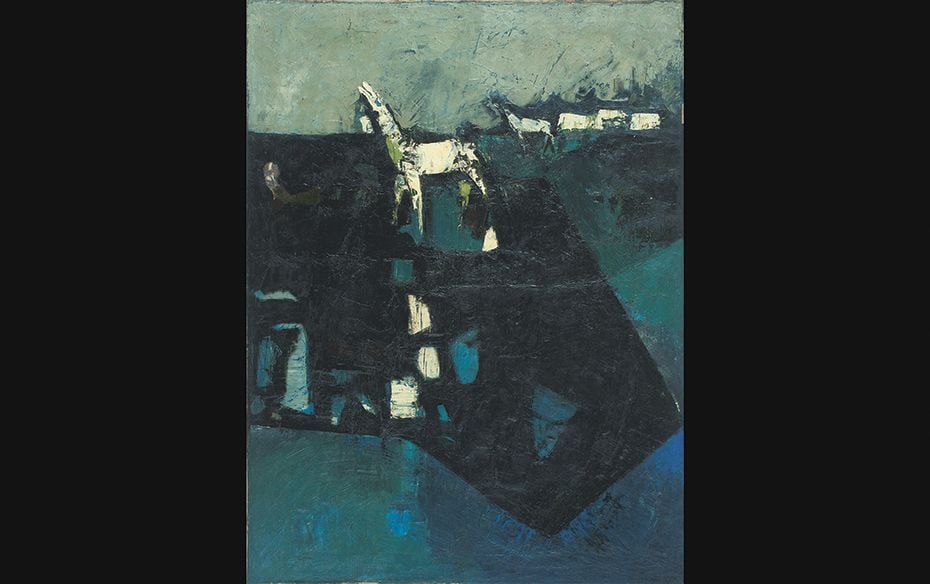
Image by : Courtesy: DAG Modern Archives
2/9
Gulam Mohammed Sheikh
b. 1937
Though the youngest member of Group 1890, Gulam Mohammed Sheikh is an intellectual giant of the calibre of Swaminathan and his career was richly weighted with labels such as significant artist, poet-writer, art historian, scholar and art teacher. He has often been referred to as the group’s conscience-keeper or gatekeeper, keeping vigil against any wrong or damaging reportage on the group or its members. Sheikh was not present during the group’s exhibition—he had left for England to do a second master’s degree at London’s Royal College of Art. Having seen the group dissolve, and inspired to some extent by Swaminathan’s journal, Contra, he started an arts magazine along with artist Bhupen Khakhar that was well respected. Sheikh was also one of only two artists whose work has tended to be figurative (to their abstract), the other being Reddappa Naidu.
[Painting: Horses Oil and encaustic on canvas c. 1960s]
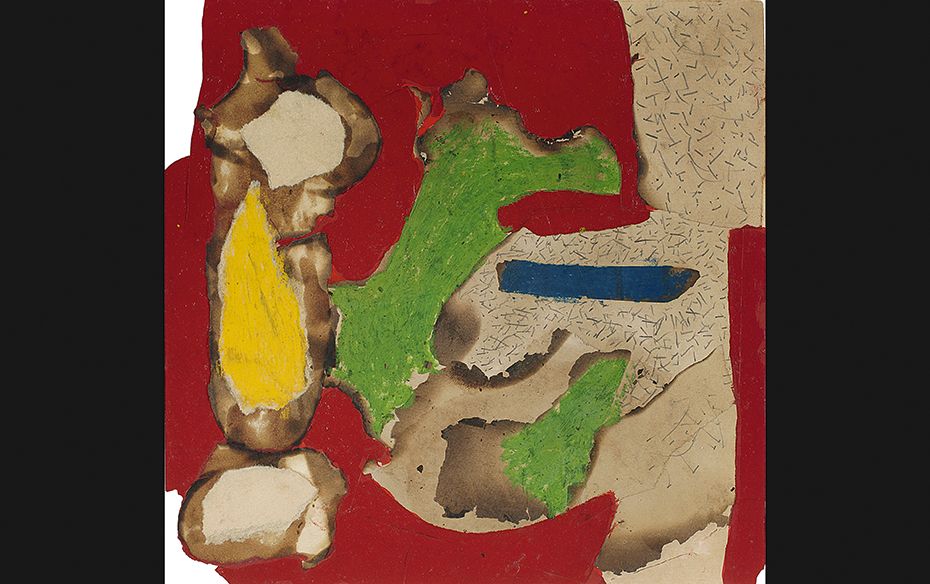
Image by : Courtesy: DAG Modern Archives
3/9
Himmat Shah
b. 1933
Himmat Shah was still experimenting with materials when he became a member. Even though he had chosen clay as his medium while studying at MS University, Baroda, his outing at the group’s exhibition was a series of burnt paper collages consisting of sheets of paper scarred by a cigarette, held together with glue, paint and fragments of printed paper. It so captivated Paz that he recommended him for a scholarship to Atelier 17 in Paris to learn printmaking. Shah went on to make a few prints, but his strength at the time—like Jeram Patel’s—was drawing, and a recent retrospective highlighted his agility and absorption with the medium. Eventually, he turned to his first love, sculpture, and is today known as a sculptor of international repute. He works with clay that he has treated, often for decades, before turning it into his primitivist Heads and other sculptures, including bottles and found objects.
Untitled Graphite, pastel, enamel and burn marks on paper pasted on paper 1962
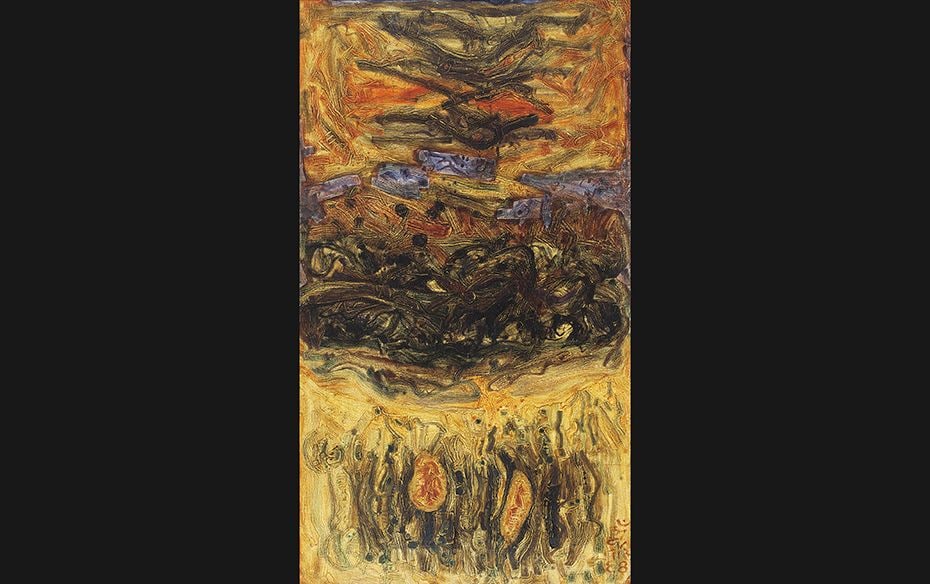
Image by : Courtesy: DAG Modern Archives
4/9
Ambadas
b. 1922, d. 2012
A student of Mumbai’s Sir JJ School of Art, Ambadas—the only Dalit in Group 1890’s members—often accused the Marxist Swaminathan for his Brahmanical views, but the two remained staunch friends. He was trained in the academic style, but Ambadas chose abstraction early in his career, and thereafter did not change his style or technique of using turpentine and varnish with oil paint to create distinctive brushstrokes in his works. Following the group’s exhibition, Ambadas’s abstract expressionism caught the attention of American art critic Clement Greenberg, who was in India to select works for a major exhibition of Indian artists. The exhibition did not materialise, but Greenberg arranged for Ambadas to tour America’s art centres and interact with major abstractionists and their work. He later married and settled in Oslo, Norway, in 1972.
Untitled Oil on canvas 1968
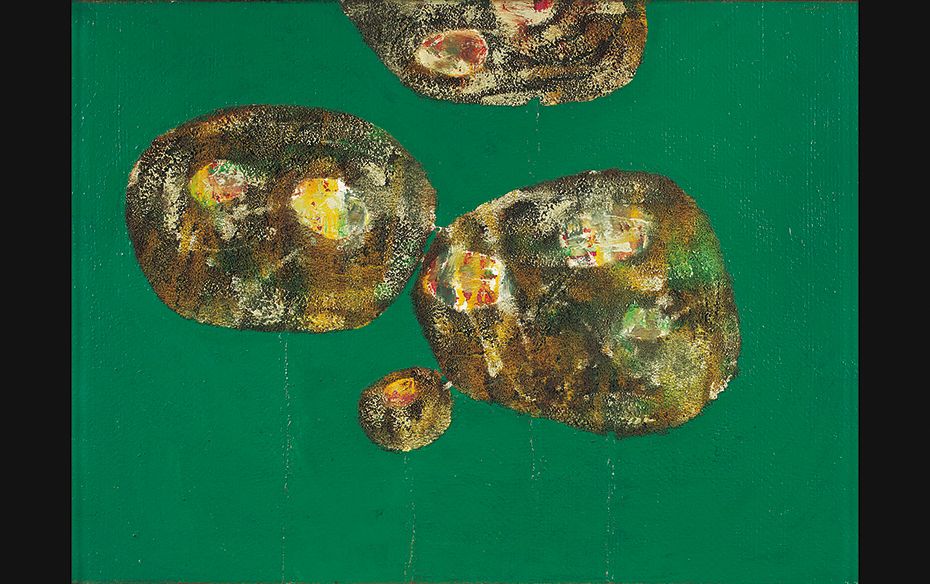
Image by : Courtesy: DAG Modern Archives
5/9
Jyoti Bhatt
b. 1934
Jyoti Bhatt has always claimed innocence about why he was included in the group, but as a young artist from MS University’s first batch of art students, he had a curious mind that enjoyed working across mediums. He was inspired by the Cubist style of his teacher, NS Bendre, and experimented with it but gave it up after a scholarship to Italy. There, he was fascinated by the adaptability of adhesives and worked with sand, Plaster of Paris and oil to lend texture to his canvases. However, he renounced that too in favour of paper collages, printmaking and photography. Following the group’s exhibition, Bhatt left for the US on a fellowship to study graphics and printmaking, but remained aligned to its ideology. His photographs of the group are an important part of its archive.
Islands (Isole) Oil and Plaster of Paris on canvas 1963
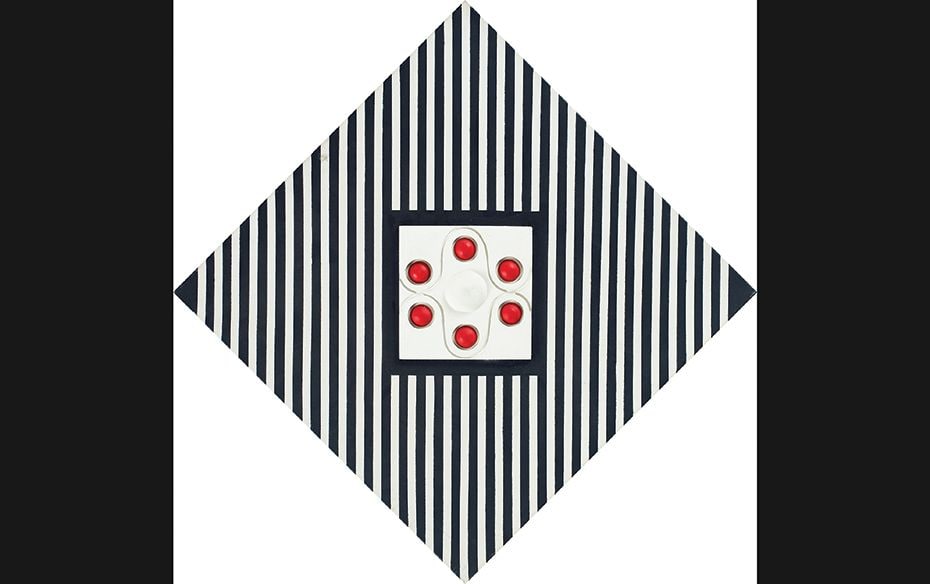
Image by : Courtesy: DAG Modern Archives
6/9
Eric Bowen
b. 1929, d. 2002
Born in Allahabad, Eric Bowen studied art in New Delhi and was part of Group Unknown along with Paramjit Singh before he joined Group 1890. In the year that he became a member, he was invited to study art in Italy, and so was represented at the exhibition by his works alone. His work at the time seemed to consist of construction- and architecture-inspired geometric paintings consisting of lines and spaces in two- and three-dimension, relief-like ‘constructions’. Though he did return to India briefly, he soon settled in Norway with his wife. His style also changed in the later years, becoming more tantra-inspired, and though his passion for spaces and grids could still be seen, the metaphysical seemed to have replaced his tryst with the spatial.
Untitled Acrylic and Plaster of Paris on canvas 1966
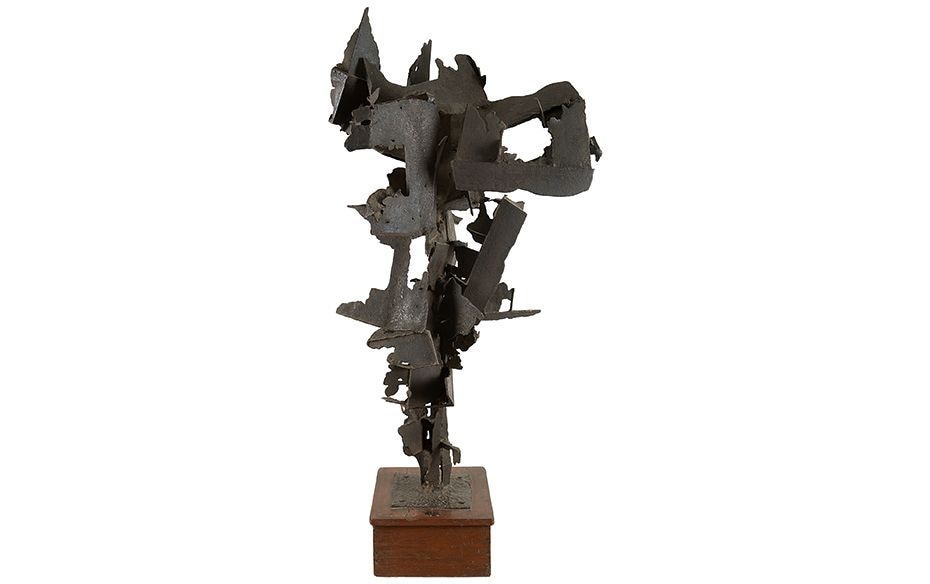
Image by : Courtesy: DAG Modern Archives
7/9
Raghav Kaneria
b. 1936
Raghav Kaneria was the only member of Group 1890 who joined as a sculptor—he had worked with junk metals in both Baroda, where he studied art at MS University, and, later, at London’s Walthamstow School of Art as well as Royal College of Art. He probably had the largest number of works on exhibit at the group’s exhibition, and was seen as a modernist in spirit at a time when a lot of work in the medium was considered sentimental. He would weld metal sheets to create abstract forms that seemed to suggest vegetation or animal forms, and if the works from that first catalogue are any indication, he was true to his belief. Though he may not have been part of the group’s meeting where the manifesto was written, he subscribed to its views. He taught in both England and India, and is now most identified for his iconic Bulls series.
Cactus Iron cast on wood pedestal c. 1960s
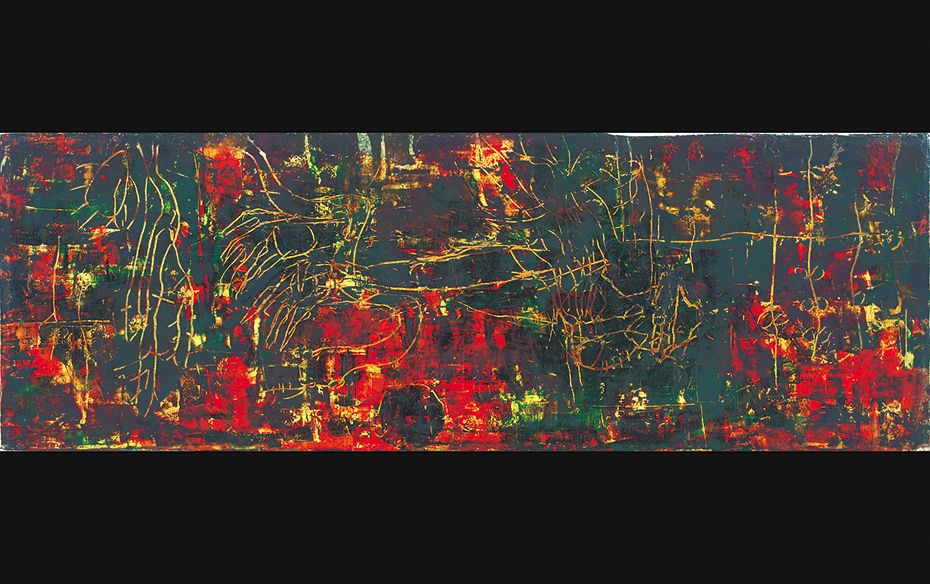
Image by : Courtesy: DAG Modern Archives
8/9
Reddappa Naidu
b. 1932, d. 1999
Part of the Group 1890 charter was to have artist representations from all over the country, and Reddappa Naidu seems to have been its choice as symbolic of the south, even though he hardly subscribed to their views, almost never attended meetings, and was not even present when the group members had their official photograph taken. Naidu’s choice of practice—mostly mythology—seemed unlikely to align with the group’s view of an indigenous modernism that was abstract but also progressive. Not that Naidu was not outspoken, claiming he owed nothing to ‘the masters of the past or the present, of the East or the West’, but his work did not really fit into the group’s philosophy of the image being the prime reason for their practice, with no context or subtext or, indeed, moral ascribed to it. Naidu mostly stayed away, a silent member of the group who is now only remembered as part of its history.
Untitled Oil on cardboard pasted on Masonite board 1962
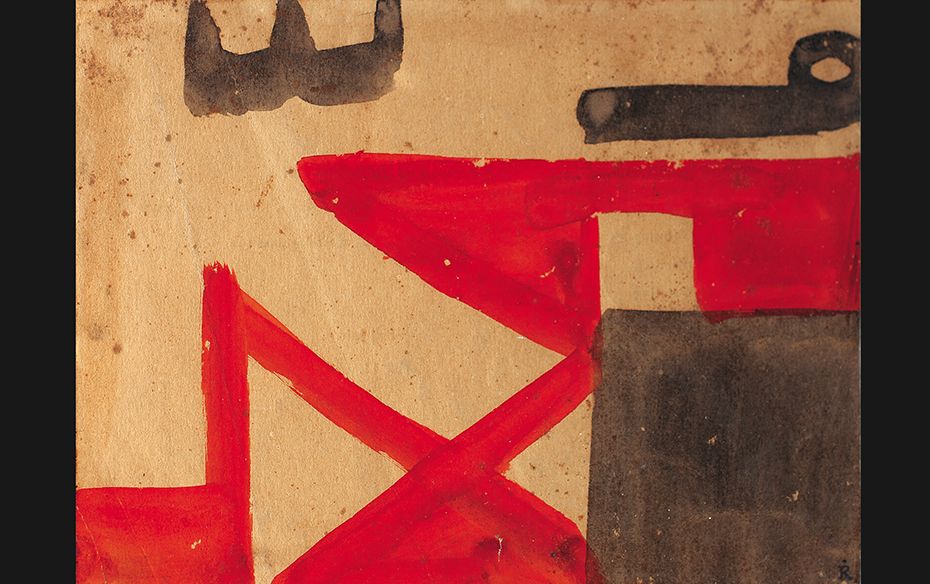
Image by : Courtesy: DAG Modern Archives
9/9
Rajesh Mehra
b. 1932
Every once in a while, Rajesh Mehra, who taught at the College of Art, New Delhi, has been known to drop hints about why Group 1890 collapsed, though there is hardly any mystery about the movement petering out, even as individual artists continued along their trajectories. Mehra was co-opted as a member after his ‘Two Figures in a Deserted Garden’ received acclaim and was acquired by the National Gallery of Modern Art, New Delhi. His works at the group’s exhibition too consisted of personal landscapes. Though he more or less stopped painting by the ’80s, he continues to remain a storehouse of information on the group, and has archival material that has helped scholars study and analyse the movement and its importance.
Writing on the Wall Water colour on paper-1 1964; Collection: The artist
X





